Search Images
Browse Content (p. 948)

Image
Altar of the Virgin, Orleans Cathedral
The Altar of the Virgin (1872 CE) in the Gothic Cathedral of the Holy Cross, Orléans, France. 13-14th century CE. The four carved relief scenes show the Presentation, Marriage, Annunciation, and Flight to Egypt.

Image
Joan of Arc, Orleans Cathedral
One of the 19th century CE stained glass windows of the Gothic Cathedral of the Holy Cross, Orléans, France (13-14th century CE). One of a series, the window shows Joan of Arc (c. 1412-1431 CE) hearing heavenly voices.
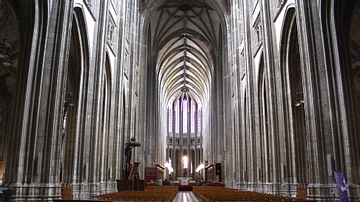
Image
Orleans Cathedral Interior
The interior of the Gothic Cathedral of the Holy Cross, Orléans, France. 13-14th century CE.
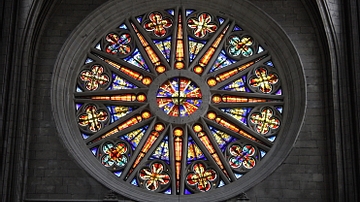
Image
Rose Window, Orleans Cathedral
The 19th century CE rose window of north transept of the Gothic Cathedral of the Holy Cross, Orléans, France. 13-14th century CE.

Image
Cathedral of the Holy Cross, Orleans
The facade of the Gothic Cathedral of the Holy Cross, Orléans, France. 13-16th century CE.

Image
Arthur Draws Excalibur, Vulgate-Cycle
An illustration of King Arthur drawing the enchanted sword Excalibur from the sword. From the Vulgate Cycle manuscript (1316 CE) in the British Library, London.
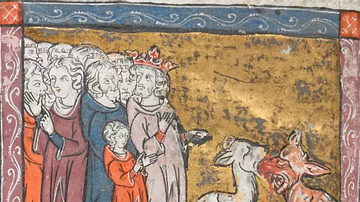
Image
Merlin Reveals the Dragons to Vortigern
Merlin showing King Vortigern (c. 5th Century CE) the dragons beneath his castle. From the Vulgate Cycle manuscript (1316 CE) in the British Library, London.
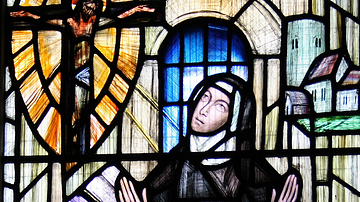
Image
St. Julian of Norwich in Prayer
A stained glass window depicting St. Julian of Norwich (c. 1342 - c. 1416 CE) in prayer. From the Norwich Cathedral in England.

Image
Statue of Julian of Norwich
A statue of St. Julian of Norwich (c. 1342 - c. 1416 CE) in the Norwich Cathedral, England.
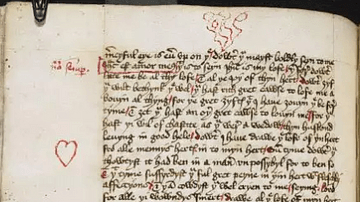
Image
Page from The Book of Margery Kempe
A page from The Book of Margery Kempe, probably copied from the original c. 1440 CE. This work was first dictated by Margery Kempe (c. 1373 - c. 1438 CE) in the mid 15th Century CE and may be the oldest surviving English biography. This...